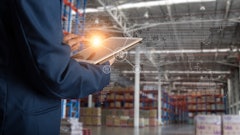Most people probably don't associate nuclear radiation and food safety, by researchers led by Dr. Les Braby at the Department of Nuclear Engineering at Texas A&M University, are investigating some very cutting-edge ways to use nuclear technology to enhance the safety of "high-risk" food products like produce and livestock.
The research team is trying to irradiate just the rind of the cantaloupe without affecting the edible part by using a machine that produces radiation that can only penetrate partway through a cantaloupe and has no radioactive source to dispose of, such as an accelerator beam. The machine's electrons are very light (compared to an atom) and bounce like popped corn in a hot-air popper, and researchers say they hope to soon be able to eliminate those microbes without any chance of damaging the part of the fruit that people want to eat.
The team, also led by Dr. Craig Marianno, visiting assistant professor in the Department of Nuclear Engineering and a research engineer with the TEES Nuclear Science Security and Policy Institute, has developed a radiation portal monitor specifically designed for livestock, under a USDA National Institute for Food and Agriculture grant. This scalable system can be used to scan animals of all sizes, from chickens to cattle, that are consumed by the public as food in areas thought by contaminated. This can have serious financial ramifications.
"Consider a state like Texas," says Marianno, "where beef is the No. 1 state commodity accounting for over $6 billion a year in sales. If beef in Texas were considered "unsellable," the financial ramifications would be tremendous." To read more, click HERE.


























